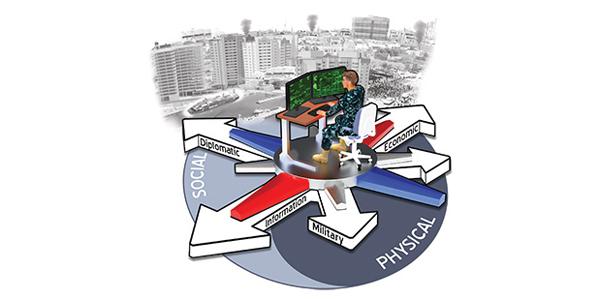COMPASS to Filter Areas of Gray
The Defense Advanced Projects Research Agency has begun a program to address an emerging conflict in a nebulous area between peace and conventional warfare. Dubbed the “gray zone,” actions in this space occur slower and are executed more subtly using social, psychological, religious, informational, cyber and other means to achieve physical or cognitive objectives with or without violence.
The lack of clarity of intent—the grayness—makes adversarial tactics more challenging to detect, characterize and counter. So the agency’s Strategic Technology Office has created the Collection and Monitoring via Planning for Active Situational Scenarios (COMPASS) program to develop software that would help clarify enemy intent by gauging an adversary’s responses to various stimuli.
COMPASS will leverage artificial intelligence (AI) technologies, game theory, and modeling and estimation. The goal is to identify stimuli that yield the most information about an enemy’s intentions and provide decision makers high-fidelity intelligence on how to respond—with positive and negative tradeoffs for each course of action.
Current military decision-making follows a well understood and effective OODA loop—observe, orient, decide and act. This approach is effective in traditional kinetic scenarios; however, it is not effective in gray-zone warfare. Signals in gray zone typically are not rich enough to draw any conclusions and, just as often, adversaries could implant these signals to induce ambiguity. COMPASS aims to add a dynamic, adaptive element to the OODA loop for the complex gray zone.
The COMPASS program will leverage game theory for developing simulations to test and understand various potential actions and possible reactions by an adversary employing gray-zone activity. It focuses on advanced software that would quickly present options to decision makers by assimilating a large amount of intelligence that has been collected using existing, state-of-the-art systems such as standard video exploitation or textual analysis tools related to rapidly changing scenarios.
“As we see increasingly more sophistication in gray-zone activity around the world, we need to leverage advanced AI and other technologies to help commanders make more effective decisions to thwart an enemy’s complex, multi-layered disruptive activity,” Fotis Barlos, DARPA program manager, says.
“We’re looking at the problem from two perspectives: Trying to determine what the adversary is trying to do, his intent; and once we understand that or have a better understanding of it, then identify how he’s going to carry out his plans—what the timing will be and what actors will be used,” Barlos explains. “The first is the what, and second is the where, when and how."
“But in order to decide which of those actions is important you need to analyze the data, and you need to understand what different implications are and build a model of what you think the adversary will do,” he says. “That’s where game theory comes in. If I do this, what will the adversary do? If I do that, what might he do? So it is using artificial intelligence in a repeated game theory process to try to decide what the most effective action is based on what the adversary cares about.”
The COMPASS program is seeking experts in AI, machine learning, game theory, modeling and simulation, control systems, estimation and other related fields. A Proposers Day is scheduled for March 30 in Arlington, Virginia. Registration instructions and more details are available on FedBizOpps. A Broad Agency Announcement solicitation is expected to be posted on FBO prior to the Proposers Day and will be available on DARPA’s FBO solicitation page.





Comments